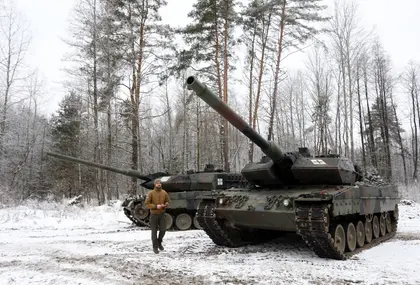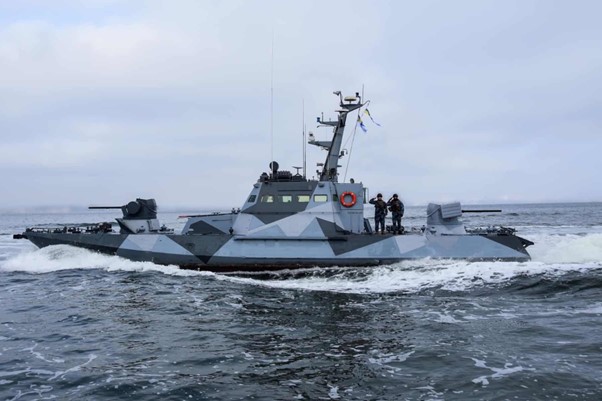Winter waits for neither a general nor a simple soldier, and that’s why Ukrainian Junior Sergeant “Diego Rodriquez” just pimped his ride.
All along the 1,500-kilometer front of the Russo-Ukraine war, behind the lines and in forward positions, tens of thousands of Ukrainian servicemen and servicewomen are getting ready to spend an entire winter out in the elements.
JOIN US ON TELEGRAM
Follow our coverage of the war on the @Kyivpost_official.
In Ukrainian civilian life, the first snap of cold weather triggers a national flurry of nesting instinct and activity with homeowners taping windows, school children made to wear hats by strangers, city officials laying in supplies of sand and salt and heating fuel, and motorists switching – in accordance with traffic law – from summer to all-season tires.
In the war’s southern Zaporizhzhia sector, Sergeant Rodriguez* (his call sign) spent several days and not a small chunk of his military pay on converting what was a ratty station wagon destined for a junk heap, into a rolling palace most front-line troops would likely envy.
Rodriguez* runs a drone section and a lot of his work is front-line supply and logistics, driving from one place to another and operating the unmanned aircraft before moving someplace else. Wartime drone operations being what they are, it’s never clear how long he will be in one place or how much the Russian army will interfere with his work.
There are no hotels or youth hostels on the front line of the Russo-Ukraine War but a soldier always needs a place to sleep, and in winter on the front line it better be warm.

Russian Air Attack Kills Nine in Sumy Region
“The main thing was to fix up my car so that I can live out of it. This is how I get around on the contact line, but at the same time I had to make it so that I could spend the night there as well,” he said.
In a video specially recorded for Kyiv Post, Rodriguez with some pride pointed out the latest mods of his 1990s-era SEAT station wagon: rear seats removed and a cot installed in their place, interior paneling ripped out in favor of industrial-grade insulation, and “the main thing” – a brand new, Graelite diesel heater rated to keep him and his sleeping space toasty even in 20 degrees below freezing. Organizer boxes with clothes and tools fit neatly underneath the cot.
Sergeant Rodriguez explaining how he powers all he needs inside his car.
In Ukrainian army supply chains, ammo can run short and medics sometimes turn to 19th-century white gauze when modern elastic pressure bandages aren’t available, but a jerry can of diesel can almost always be found somewhere in practically any Ukrainian army unit, and if not, diesel’s always on sale at civilian fuel stations.
Power for laptop and other electronic devices run off a KUERL car electric converter originally purchased by volunteers for a combat drone unit (the UAV, in operation since 2018, finally broke) and acquired as cast-off parts by Rodriguez during a supply run.
In regions where the fighting line is relatively stable, in Ukraine, mobile phone coverage often can be caught only a few kilometers from front-line positions and sometimes closer.
Most of the time the SEAT is only fifteen or so minutes away from a reasonable internet connection, but the next level step for the car, Rodriguez said, has to be a personal Starlink system, he said.
Front-line soldiers interviewed for this story told Kyiv Post the Ukrainian military has generally done a good job getting winter clothes to troops, and that warm boots, padded pants and insulated overcoats are being drawn from army storehouses. Even military-grade thermal underwear is on offer, but civilian thermal underwear is preferred, they said.
Fresh warm clothing well before the cold hits – a given in NATO armies – in the winter 2022-23 was one of many headaches for Armed Forces of Ukraine (AFU) logisticians, who wound up kitting out soldiers in a hodge-podge of government issue, Soviet leftovers and civilian anoraks and combat boots bought by volunteers. That’s changed and now the AFU army supply chain has warm clothes in quantity, interviewees said.
The real problem, the soldiers said, was that even expedition-grade clothes bought in the best outdoor store in Europe, really can’t make a winter trench in Ukraine much less miserable. A soldier deployed to the front line has no option, with winter approaching, but to go into home improvement himself, and then become a sort of a lumberjack, they said.
A Ukrainian infantryman from the 57th Otaman Kost Hordiienko Separate Motorized Infantry Brigade prepares his lunch in a trench on the front positions near the town of Bakhmut earlier this year. PHOTO: AFP.
Anatoliy Tkach*, a former infantryman, told Kyiv Post in an interview that any front-line unit stationary for more than about a day starts fitting out trenches and bunkers for warmth, using whatever materials are available, without orders. The next inevitable step is the installation of a wood-burning stove into one’s bunker, a tested system first widely used during the First World War, he said.
“When the cold weather hit (last year) all our dugouts were equipped with the stoves, and we found firewood on the spot, we just cut it ourselves,” Tkach said.
“Plus we made torches in large quantities. But when we left those dugouts everything smelled of smoke,” he said.
Tkach said wood stoves are widely available. Across the front, fuel is a chronic problem and intelligence officers have complained troops posted near forests tend to give away their position by slowly cutting down all the trees.
Tkach said he has since transferred to drone operations and told Kyiv Post for now he and his section are currently living relatively well in an abandoned house with electricity, running water and gas heating.
Ihor Baklan*, a staff officer in the AFU’s 127th Territorial Defense Brigade, said that black plastic wrapping was, along with lumber, another critical material for preparing winter positions, for extra warmth and because positions need to have opaque insulation, or Russian drones will see lights or even the thermal signature of Ukrainian soldiers inside. AFU sleeping dugouts need not only wood stoves but also total light-proofing, he said.
“If there is a forest, troops can try and make fire at a distance away from the front line,” Baklan said. “But any light in the forest will attact attention, still they are the lights in the forest attract attention, and wherever a Lancet (a Russian strike drone) can fly there can there be shelling. Enemy ‘birds’ notice everything.”
Ukrainian servicemen make a trench near Bakhmut on Feb 1. PHOTO: AFP.
Baklan said front-line troops have sufficient clothes but they still need personal winter supplies that they realistically can expect from volunteers purchasing on the civilian market: medical items like lip balm and sore ointments, chemical hand warmers, replacement socks and heat tabs for cooking. The top automotive item in need is antifreeze, he said.
Some soldiers interviewed for this story said that less-active campaigning brought on by winter makes rear area civilian problems like government corruption or political backbiting worse for the man or woman on the front lines, because he or she feels like they are suffering cold and discomfort, and meanwhile the rest of Ukraine doesn’t care and is arguing.
“(I)f not every day, then every other day there is some report of corruption scandals and bribes. Officials who had nothing to do with that war continued to rob and steal. And this also takes its toll (on soldiers). It’s demoralizing and demotivating. The question arises ‘What are we doing here [in the cold] when all this idiocy is happening in the rear, behind the front?’” Tkach said.
*Soldiers named in this story identified themselves to Kyiv Post but asked their names not be published for security reasons. Kyiv Post respected the request and used pseudonyms.
You can also highlight the text and press Ctrl + Enter













